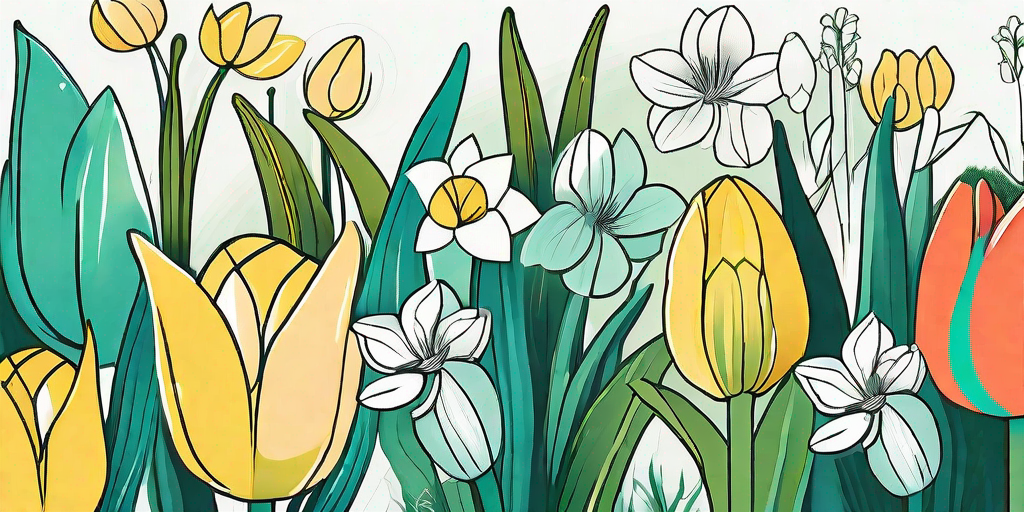
If you're a budding gardener or a seasoned green thumb looking to add a splash of color to your garden, you've come to the right place. This guide will take you on a journey through the world of bulb flowers, those blooming beauties that add charm and elegance to any outdoor space. So, pull on your gardening gloves, grab your trowel, and let's dig in!
The Magic of Bulb Flowers
What makes bulb flowers so special, you ask? Well, these little powerhouses of the plant world have a unique ability to store energy in their bulbous bases. This means they can survive through harsh winters, only to burst into life when the conditions are just right. It's like they're playing hide and seek with Mother Nature, and we must admit, they're pretty good at it.
But it's not just their resilience that makes bulb flowers a favorite among gardeners. They also come in a dazzling array of colors, shapes, and sizes, making them a versatile choice for any garden design. Whether you're aiming for a wild and whimsical look or a formal and structured aesthetic, there's a bulb flower to suit your style.
Types of Bulb Flowers
Now that we've piqued your interest, let's dive into the different types of bulb flowers. Trust us, there's a whole world of blooming beauties waiting to be discovered.
Tulips
When it comes to bulb flowers, tulips are the belle of the ball. Originating from Central Asia, these elegant flowers have been a symbol of love and passion for centuries. With over 3,000 varieties in a rainbow of colors, tulips are a versatile choice for any garden.
And the best part? They're easy to grow! Just plant them in the fall, and come spring, you'll be rewarded with a stunning display of color.
Daffodils
Nothing says spring like a field of daffodils. These cheerful flowers are known for their bright yellow color and distinctive trumpet-shaped center. But did you know they also come in white, orange, and even pink? Now that's a fun fact to impress your gardening buddies with!
Daffodils are also incredibly hardy, making them a great choice for beginner gardeners. Just plant them in a sunny spot, and they'll come back year after year.
Hyacinths
If you're looking for a flower that packs a fragrant punch, look no further than hyacinths. These compact flowers are known for their sweet scent and clusters of star-shaped flowers. They come in a variety of colors, including pink, purple, white, and blue.
Hyacinths are also a popular choice for indoor gardening, so you can enjoy their delightful fragrance all year round.
How to Plant Bulb Flowers
Now that you're familiar with the different types of bulb flowers, let's get down to the nitty-gritty: how to plant them. Don't worry, we've got you covered with a step-by-step guide.
Step 1: Choose Your Bulbs
First things first, you'll need to choose your bulbs. Look for bulbs that are firm and free from mold or damage. And remember, bigger is usually better when it comes to bulbs. The larger the bulb, the bigger the flower!
Step 2: Prepare the Soil
Next, you'll need to prepare the soil. Bulb flowers prefer well-drained soil, so if your garden is more clay than sand, you might want to add some organic matter to improve the drainage. Also, make sure to choose a spot that gets plenty of sun.
Step 3: Plant the Bulbs
Now for the fun part: planting the bulbs. As a general rule, bulbs should be planted at a depth three times their height. So, if you have a 2-inch bulb, you'll want to plant it 6 inches deep. Make sure to plant the bulb with the pointy end facing up. If you're not sure which end is up, look for the roots. They're usually at the bottom of the bulb.
FAQs
We know you're eager to get started, but before you dash off to the garden, let's tackle some frequently asked questions about bulb flowers.
When is the best time to plant bulb flowers?
Most bulb flowers should be planted in the fall, before the first frost. This gives them a chance to establish their roots before the cold winter months. However, there are some exceptions, so always check the planting instructions on the bulb package.
Do bulb flowers come back every year?
Many bulb flowers are perennials, which means they come back year after year. However, some types of bulb flowers, like tulips, may need to be replanted each year for the best display.
Do bulb flowers need a lot of care?
One of the great things about bulb flowers is that they're relatively low maintenance. Once planted, they require little care other than watering and occasional feeding. Just sit back, relax, and wait for the show to begin!
Conclusion
There you have it, a comprehensive guide to the most stunning bulb flower types. Whether you're a novice gardener or a seasoned pro, we hope this guide has inspired you to add some blooming beauties to your garden. So what are you waiting for? It's time to get planting!















